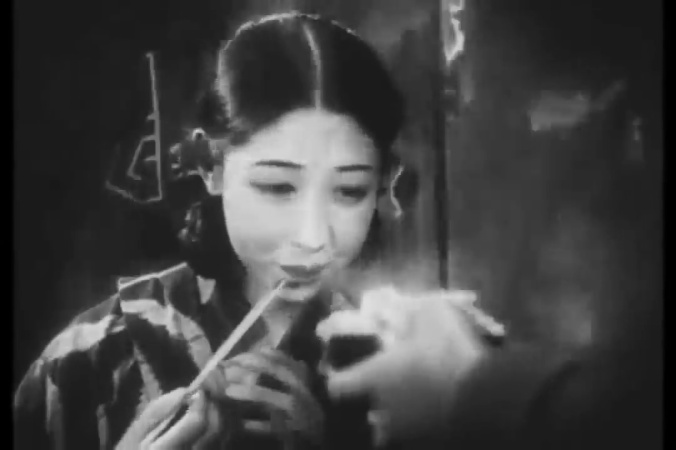 What Made Her Do It? is a remarkable silent Japanese movie, which unfortunately has survived only in an incomplete version. The first and last reels have gone missing, but the restoration available on YouTube fills in the missing scenes with titles, so you can tell what happened if without the full emotional power.
What Made Her Do It? is a remarkable silent Japanese movie, which unfortunately has survived only in an incomplete version. The first and last reels have gone missing, but the restoration available on YouTube fills in the missing scenes with titles, so you can tell what happened if without the full emotional power.
Among the silent films available to Americans, it introduces the woman as perpetual victim, one of the basic themes of Japanese cinema. Almost everything that can happen to Sumiko does.
Oddly enough, in all her travails, no one sells her into a brothel. But pretty much everything else bad falls to her lot. Her father decides to commit suicide and sends her to his brother, neglecting to mention this to the brother. He in turn has a huge family of his own and so he sells her to a circus,

Sumiko sold to be a target — for some unknown reason, the circus pretends to be Chinese.
where she is the target for a drunken knife thrower. She runs away with a boy who is hit by a car, so she is sent to the poorhouse. From there, she becomes a maid for an abusive mistress, then the maid for a music teacher who tries to rape her. When she runs away again with another boy, the double suicide fails and she is sent to a “Christian” home where she must repent any and all sins, real or imaginary. Driven crazy, she burns down the home.

Christianity as public humiliation and confession
In summary, it verges on the ludicrous, but while you are watching, it is fascinating and powerful. Only perhaps Mizoguchi’s Life of Oharu subjects its heroine to more emotional agony. But unlike Oharu, Sumiko is poor, and her sufferings are the sufferings of the urban poor, both emotional and physical. There can be little question of the left-wing political implications of the movie.
Not much is known about the director, Shigeyoshi Suzuki, and his career was brief to say the least. Nevertheless, this is one of the most daringly photographed and edited of all the available Japanese silents, comparable to Kinugasa’s Jujiro. It was recognized as such at the time, coming in first place on the Kinema Junpo poll. How much this had to do with Suzuki and how much to his editor will never be known, but the combination certainly led to something unusual. The screen captures here can’t begin to indicate the variety and energy of the whole.
Much of the story is told by montage, but the movie also introduces something that will be a persistent visual pattern of Japanese film-making: framing characters through the scenery. I’m sure it was already common before 1930, since the sliding doors, raised floors,
roof support posts, and strong horizontals of traditional Japanese architecture make the use of openings as framing devices almost too easy,* but I have not seen it used so effectively in the handful of early silents available.
The YouTube version is not in especially good shape, as can be seen from the screen captures, but it is well worth your time.
- This was one of the major design elements that made the Japanese conversion to wide-screen so quick and effective.


